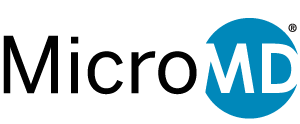As the healthcare industry continues to evolve, limiting patient care to only the times when a patient is within the practice walls is quickly becoming insufficient. Increasingly, seeing positive outcomes is becoming reliant on a more continuous form of care, potentially for patients living with chronic conditions. One way that providers can offer this more in-depth care is through remote patient monitoring (RPM). Let’s discuss what this program is and some important features to look for in an RPM solution.
What is remote patient monitoring (RPM)?
Remote patient monitoring enables providers to manage patient conditions, both acute and chronic, outside of traditional care settings with the use of digital medical devices. Once data is collected from these devices, it is then transferred to the patient’s provider so that readings outside of the expected range can prompt action.
RPM is important to seeing improved health outcomes in many chronic conditions, as it enables providers to have a more complete picture of their patients’ health. Some of the most frequently managed conditions with RPM include hypertension, heart disease, diabetes, asthma, and COPD, common chronic conditions that require careful monitoring to remain under control.
5 Features to Look for in an RPM Solution
Whether you’re considering implementing remote patient monitoring for the first time, or you have a current solution that isn’t working out, it’s important to know what you’re looking for in your ideal solution. Here are five features to look for in a strong RPM solution.
- An RPM solution should be easy to use. If your RPM program is too difficult to manage, it will negatively impact both providers and patients. Ease of use is one of the most important features to ensure widespread adoption in your practice. Patient devices must be set up so that they are always ready to use for all patients, regardless of how tech savvy they are. Additionally, choosing a solution that uses devices with cellular connectivity ensures that patients will be able to participate in your RPM program whether they have access to the internet or not.
- An RPM solution should offer reliable analysis of accurate data. Being able to see improved health outcomes from your RPM program hinges on the accuracy of the data collected from the devices and how reliably that data is analyzed. Some solutions require that practice staff access the program’s interface and interpret the data there to determine if any actions are necessary. For some practices, this could work, but often this can be too much of a burden for an already busy staff. It’s often best to find an RPM solution that offers third party monitoring where the data is analyzed and interpreted, and alerts are served to providers when there is an indication of a problem.
- An RPM solution should integrate into your practice’s existing workflow. In order for an RPM program to be a success in your practice, it must not be disruptive to the other care tasks you’re already completing. Look for an RPM solution that seamlessly fits into your practice’s existing workflow. It’s even better if you can find a solution that integrates directly with your EMR software so that all of your patients’ information is in the same place for ease of analysis.
- An RPM solution should be cost-effective. While it would be great if money were no object when it came to providing patient care, unfortunately that isn’t the case. However, it’s important to remember that cost-effective is not necessarily synonymous with cheap. A cost-effective solution for your practice is one that provides the features you need to achieve the desired benefits for a price that allows you to see a reasonable return on investment. Remember the importance of patient friendly devices featuring a cellular connection. Creating ease of use for patients will lead to greater success in hitting the required number of monthly readings so that you can achieve reimbursement.
- An RPM solution should feature strong cybersecurity. Anytime patient data is involved, safety must be a top priority. Be sure to vet each solution’s methods of securing the patient data they obtain so that you can be reasonably confident that you are protected from breaches.
Remote patient monitoring is a fantastic tool that can provide a great deal of benefits and help to improve the health outcomes among your patient population. As with any other new implementation, it’s important to choose a solution that will allow you to achieve the goals you have in mind with as little disruption to your current workflow as possible. By looking for a solution that possesses the five features we’ve discussed, your practice will be in a good position to see RPM success.
To learn more about the RPM solutions MicroMD has to offer, visit our Solutions Central page or call 1-800-624-8832 today.
About the author,
Crystal Stanton

Crystal is a Digital Marketing Specialist at MicroMD. Content creation, social media management, and SEO optimization are just a few of her areas of concentration as she seeks to educate clients and prospects alike about the simple, customizable, and connected solutions we offer at MicroMD.
Looking for PM or EMR Software?
MicroMD PM and EMR/EHR is flexible and can fit almost any specialty. Let us help you get back to the business of healing.








